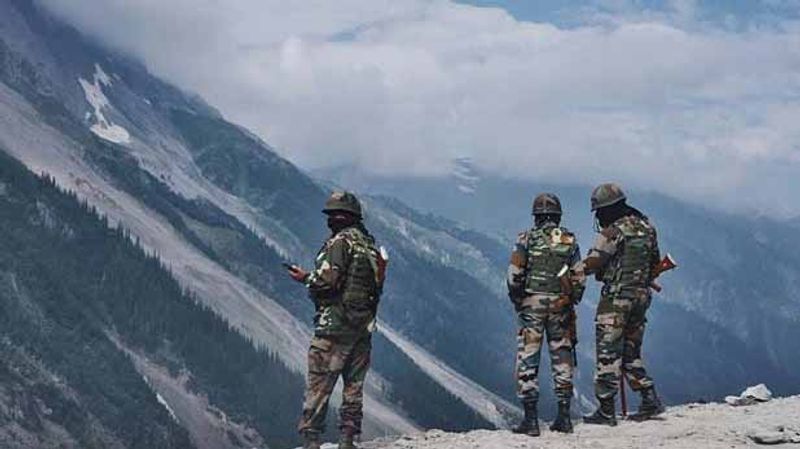ಬಹುಪಾಲು ಸೈನಿಕರು ನಿವೃತ್ತಿ ಬಳಿಕವೂ ಸೇನೆಯಲ್ಲಿ ಸೇವೆ ಸಲ್ಲಿಸಲು ಬಯಸುತ್ತಾರೆ. ಹೀಗಿರುವಾಗ 400 ಮಂದಿಯನ್ನು ಸಂಪರ್ಕಿಸಿ ಅವರ ಅಭಿಪ್ರಾಯವನ್ನು ಭಾರತೀಯ ಸೇನೆ ಅಭಿಮತ ಎನ್ನುವುದು ತಪ್ಪು ಎಂದು ಸೇನೆ ಹೇಳಿದೆ.
New Delhi: The troops of India and China have moved back to their respective sides but not far in the Depsang plains and Demchok areas of the Ladakh region. These were the two last friction points between the two countries since the border standoff began in 2020 along the line of actual control in eastern Ladakh.
Sources in the defence establishment said that the troops have disengaged from all areas where they were engaged in fighting in Depsang and Demchok. Sources said that both sides have uprooted some of their tents in Depsang, and they added that it will take some time to dismantle the permanent structures in both areas.
The sources added that the patrolling would begin once the disengagement process is completed. On Thursday, Defence Minister Rajnath Singh said India and China had reached a consensus to restore the “ground situation” based on the principles of equal and mutual security. “The consensus includes patrolling and grazing in traditional areas,” he said.
Depsang and Demchok
In the Depsang plains, the Chinese troops have blocked access to PPs (Patrolling Points) 10, 11, 11A, 12, and 13, which comprise about 952 sq km. It is pertinent to mention here that these PPs are located well inside the Indian territory.
The strategic Depsang is close to the Y-Junction, which is about 20 km from the Daulat Beg Oldi (DBO) airfield. Sitting at the Y-Junction, the Chinese troops have been obstructing Indian troop movements in the region. The Y-Junction also links Siachen Glacier and the DBO airfield.
At Demchok, the Charding Nullah (CNN) separates India and China. The west of the CNN is Indian territory, while the east is China. Since 2018, the Chinese troops have entered to the west of the CNN and constructed tents, which is considered to be Indian territory. As per the agreement reached between the two sides, the troops of both sides have moved back to their sides.
It must also be mentioned that the agreement has taken place on Depsang and Demchok only. There would be no development where disengagement has already taken place in the past. The buffer zones created at those friction points will remain for now.
At present, the two sides have disengaged from PP 14 (Galwan), PP 15 (Hot Springs), and PP 17A (Gogra), the north and south banks of Pangong Tso.
Since the 2020 border standoff, India has deployed over 68,000 troops, about 100 tanks, 330 Infantry Combat Vehicles, and other artillery to forward positions in response to the Chinese troop movements in the Ladakh region.
Disengagement from and :--
-- Troops from both sides moved back, not far
-- Some tents have been uprooted
-- Some temporary structures have been dismantled
-- It will take some times for complete disengagement
-- Once done, patrolling resumes
Disengagement from #Depsang and #Demchok:--
— Anish Singh (@anishsingh21) October 24, 2024
-- Troops from both sides moved back, not far
-- Some tents have been uprooted
-- Some temporary structures have been dismantled
-- It will take some times for complete disengagement
-- Once done, patrolling resumes #IndiaChina
You may also like

Impact of cyclone Dana felt in Bihar, 34 districts to be affected

Former Envoy Reveals How Khalistani Terrorists Influence Indian Students In Canada

China plays nice with US partners ahead of possible Trump return

'No causalities' reported in cyclone Dana: Odisha CM Mohan Majhi

SBI Bank provides 5 big facilities to pensioners, many people are not aware about this







